Bloom where you are planted – so goes the saying.. It couldn’t be better exemplified with our guest blogger for this month – Mayuri.
Although I have known her for less than an year, I find her extremely devoted to the blog and administering several blogger groups very efficiently, not to forget the plethora of Indian (specifically Gujarati cuisine) as well as International Cuisine on her blog.
She has made Kenya her second home, and brings us the flavour of that country here in this guest post. I am personally a great admirer of her blog and her energy, and look forward to meeting her in Mumbai sometime soon. Thank you, Mayuri for your kind words and also doing for this guest post…
Let’s move to Mayuri’s guest post now and a lip smacking Mombasa recipe, in her own words…
*******
Whenever I’m approached to do a guest post, I get really excited as it gives me the opportunity to share a bit of me with the blogger and I get to know the blogger, different cuisine and different ideas too. So when Kalyani, asked if I would be a guest on her blog, I obliged willingly.
Kalyani has a wide selection of Vegetarian recipes be it healthy, vegan, for toddlers or some treats too.Check out a healthy chaat using moong .I’m waiting to get some fresh crunchy purple cabbage to try out her Bolivian Purple Cabbage Salad. Do you want to try a healthy dessert? Then check out the Vegan Chilli Chocolate Mousse. Its quite easy to manoeuver through her blog as under each title she has sub titles.
I’ve been several times to Mumbai and have not had a chance to meet Kalyani. However, next trip definitely planning to meet her. From what little interaction I’ve had with her through the various groups, she is a very polite, helpful and courteous person.
Kalyani wanted me to share on her blog a traditional recipe. I already have quite a few traditional Gujarati recipes on my blog so asked her if I could share a bit of the Mombasa tradition with her and she immediately agreed.
Mombasa, the oldest city of Kenya, was inhabited but the families of the Twelve Nations (Thenashara Taifa),the keepers of the Swahili tradition.The first European to visit Mombasa was Vasco Da Gama. Mombasa being a coastal town with a natural harbour naturally attracted a many travelers and invaders too. It is believed that Mombasa was founded in 900 A.D. It was an important trading centre for spices, gold and ivory. Along with that it is believed that it also was a centre from where slaves were exported. Trade was carried out with countries like China, Indian Subcontinent, Persian Empire, the Arabian Peninsula. 2 years after Vasco Da Gama’s visit Mombasa was invaded by the Portuguese.
They built the famous Fort Jesus which was captured by the Omani and came under the rule of the Imamate of Oman. It returned to the Portuguese rule for a brief period before it came under the British Protectorate. It became the main capital and sea terminal for the famous Uganda Railway. To build this railway beginning from Mombasa to Kisumu on the shore of Lake Victoria, many Indians were brought from British ruled India.
After Independence in 1963, many Indians brought to East Africa by the British Empire, decided to remain in Africa and began life there, mostly as traders.
Geographically, Mombasa is blessed with abundance of fresh fruits like mangoes, bananas, pineapples, passion fruits, water melons etc to name a few, sea food, cashew nuts, coconuts.
All these factors have resulted in a special Swahili Cuisine that everyone who visits Mombasa wants to try it. Famous for Chicken Tikka, kebabs, Mahamari, Mbaazi, Kaimati, haluwa, Mkati Sinia, Kashata, Viazi Karanga (Viazi karai), Mabuyu (baobab seeds), Achari (mango dried and then sugar or salt is added and sometimes red colour is added).
Many of the local cuisine has been influenced by the Arab, Indian, Portuguese and English culture. Mombasa will offer you street food to a typical English meal( in the old colonial Mombasa Sports Club). Whoever visits Mombasa, doesn’t leave the island without sampling at least a few traditional dishes. Achari and Mabuyu is what relatives abroad want us to take for them or its the famous cassava crisps (mogo crisps).
My contribution for a traditional Mombasa dish for Kalyani’s blog is Viazi Karanga or known more famously as Viazi Karai. Karai here refers to a basin or huge bowl or wok. Viazi in Kiswahili means potato. This snack is so famous all over Mombasa. Its served as street food (where in the evenings in some old parts of Mombasa or the slum areas, women come out in the evening at their doorstep and prepare this snack for passersby). Its also served in the numerous fast food cafes that are found in every nook and corner of Mombasa.
I remember gorging on this delicious snack during my 10a.m break at school when I was teaching. My kids have many a times bought them from their school canteen to snack on at break time. what’s so special about this potato snack? At first glance it looks like bateta vada but its different. Boiled potatoes are sandwiched with a red chili and lemon mixture, coated in a batter and fried. Its always served with a coconut chutney.
I wanted to use baby potatoes for this recipe but I didn’t get any in the local greengrocer shop. Usually they are made using normal potatoes, which I used. I made a slight variation from the traditional recipe by adding garlic in the filling and not using orange food colour for the batter.
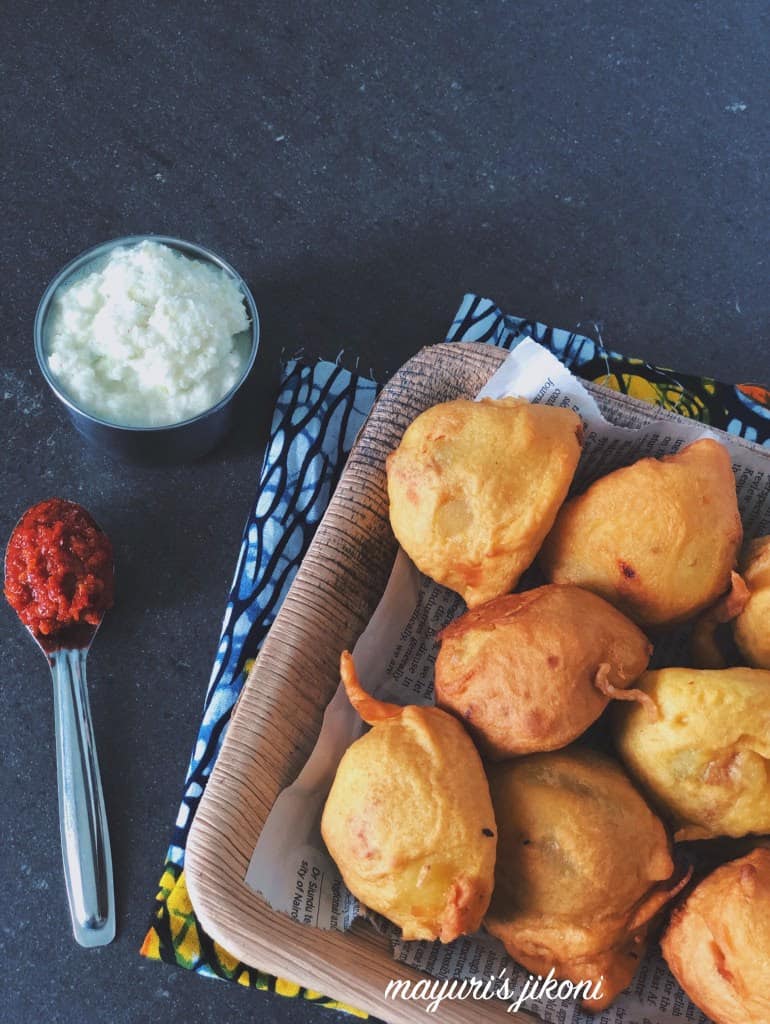
VIAZI KARANGA/VIAZI KARAI
Serves 6-8
8 medium potatoes, boiled and peeled
For the filling:
1 tbsp garlic paste
2 tbsp lemon juice
1-2 tsp red chilli powder
½ tsp salt
For the batter:
1¼ cup chana flour (besan, chickpea flour, unga ya ndengu)
¼ cup plain flour (all purpose flour)
¾ tsp salt
¼ tsp turmeric powder (haldi, manjano)
2 tbsp hot oil
¾ cup water
oil for deep frying
For the Chutney:
1 cup fresh grated coconut
¼ cup finely chopped raw mango (peeled)
2-3 green chillis
½ tsp salt
1 cup water
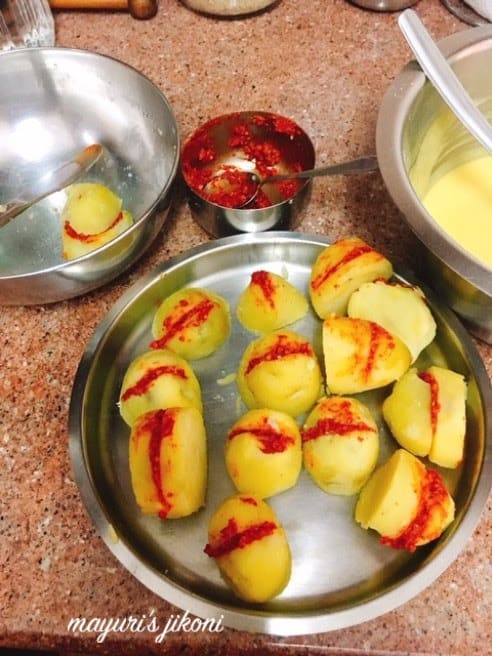
Preparation of the Chutney:
- Add the grated coconut, mango pieces, salt and chopped chilis into a blender jug. Add 1 cup water and blend.
- Remove the chutney into a serving bowl.
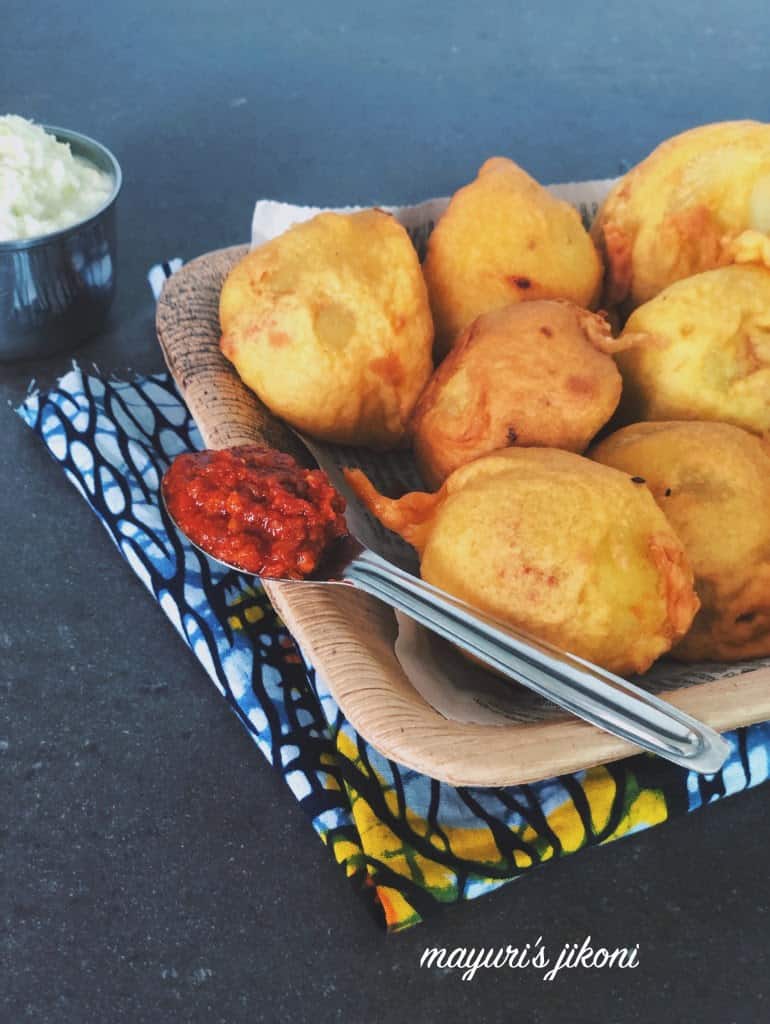
Preparation of the filling/ red chili chutney:
- Mix the garlic, red chili powder, salt and lemon juice together.
Preparation of the batter:
- Mix all the ingredients for the batter. Make sure its a thick and smooth batter.
Preparation of Viazi Karanga or Viazi Karai:
- Cut the potatoes into half or smaller pieces if they are too big.
- Make a slight slit in each piece.
- Using a butter knife fill the slit with the filling (red chili chutney).
- Fill all the potato pieces.
- Heat oil for deep frying in a karai, wok or kadai over medium heat.
- Drop a small drop of the batter in the oil. If it sizzles and comes up immediately then the oil is ready.
- Coat the potato piece with the batter. Gently drop it into the hot oil.
- Add 2-3 batter coated potatoes into the oil, depending on how big your kadai, karai is.
- Fry the viazi till it becomes golden brown.
- Repeat steps 7-9 with the remaining potato pieces.
- Serve hot viazi karai with the coconut chutney and the red chili chutney if you have any left.
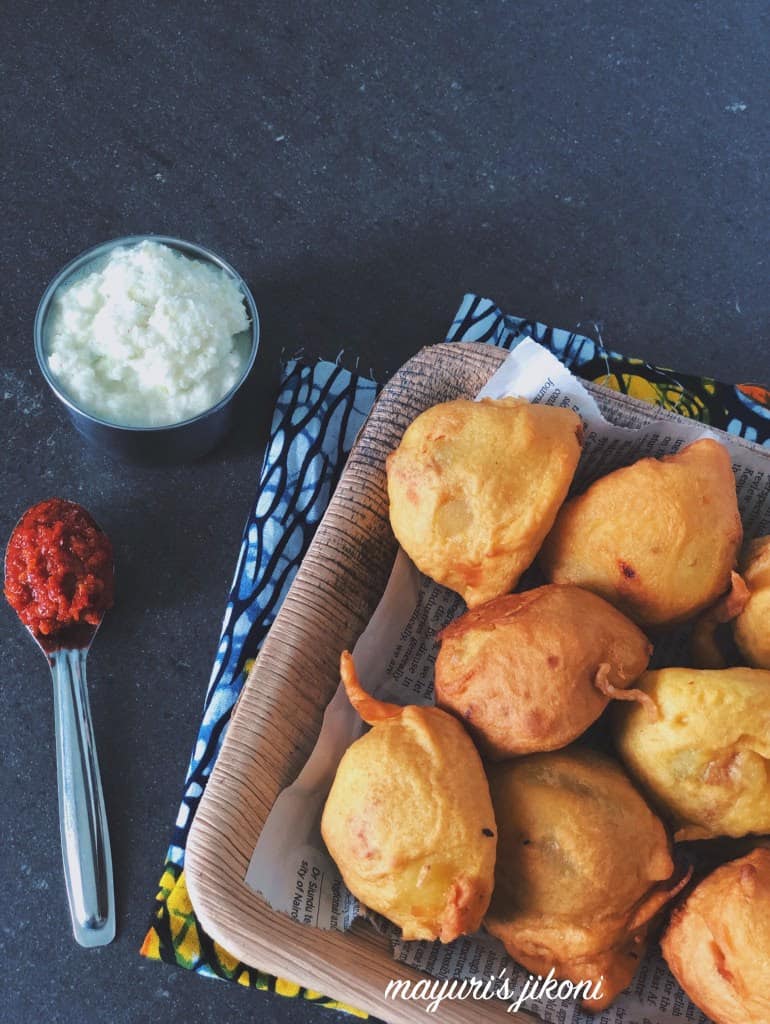

Tips:
- Make extra red chili chutney to serve with the potatoes.
- Use small potatoes if you wish.
- Add coriander to the batter if you wish.
- If you prefer more chilis, then add more to the chutney.


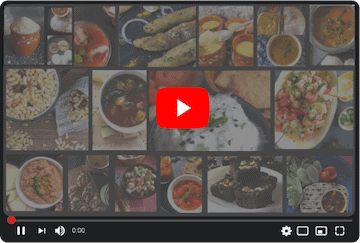
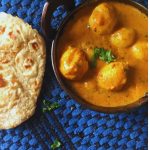
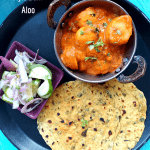

Very interesting. I will certainly try this in coming days.
Thank you so much Kalyani, for inviting me to be a guest on your blog. Kenya is my first home, I'm born and brought up in Kenya. Its more like India is my second home.